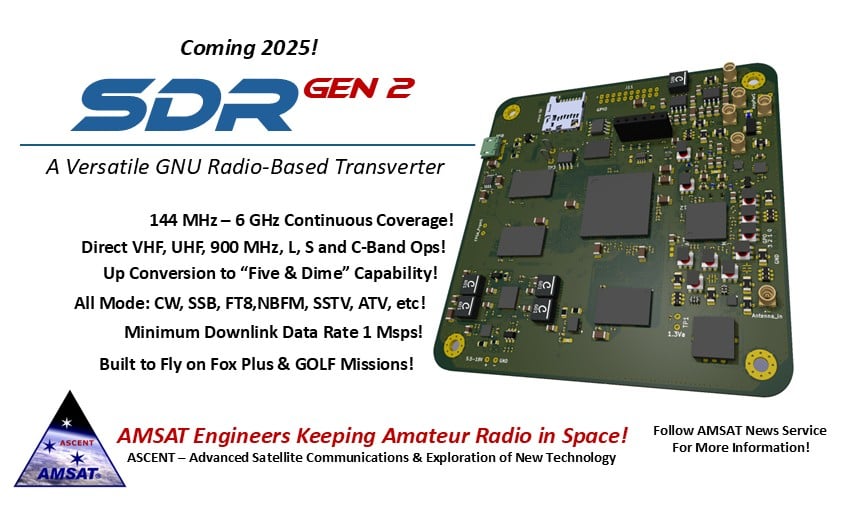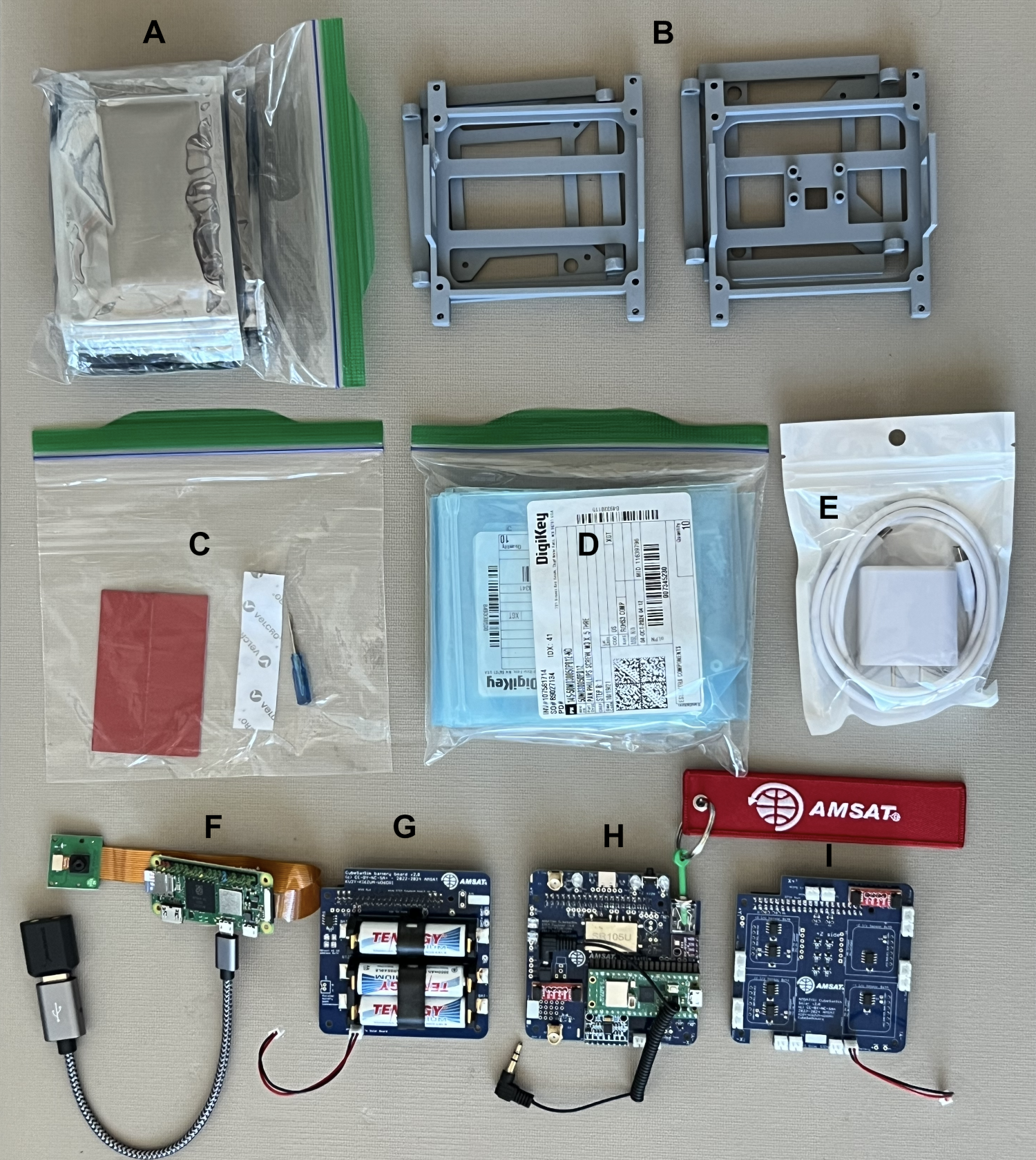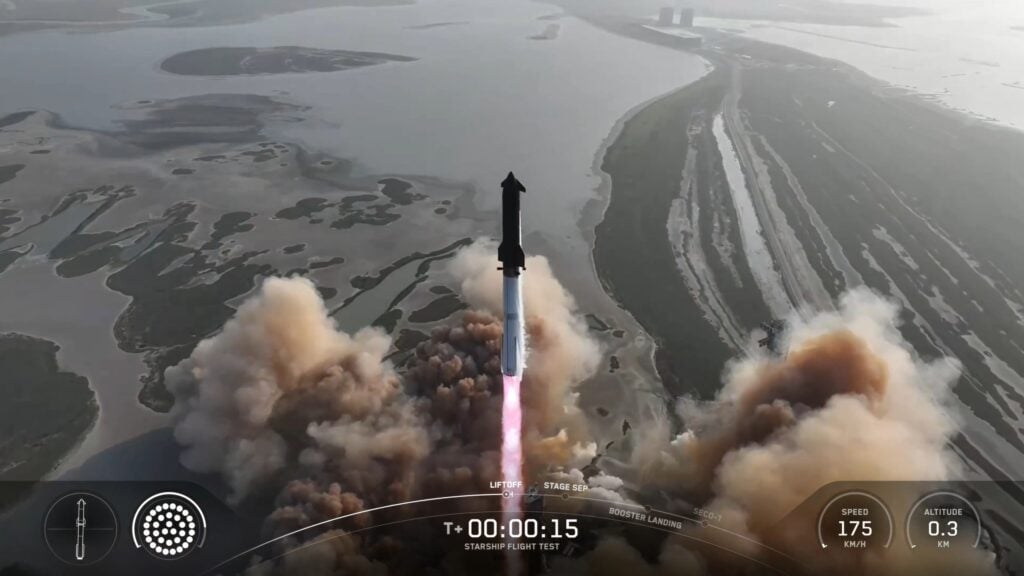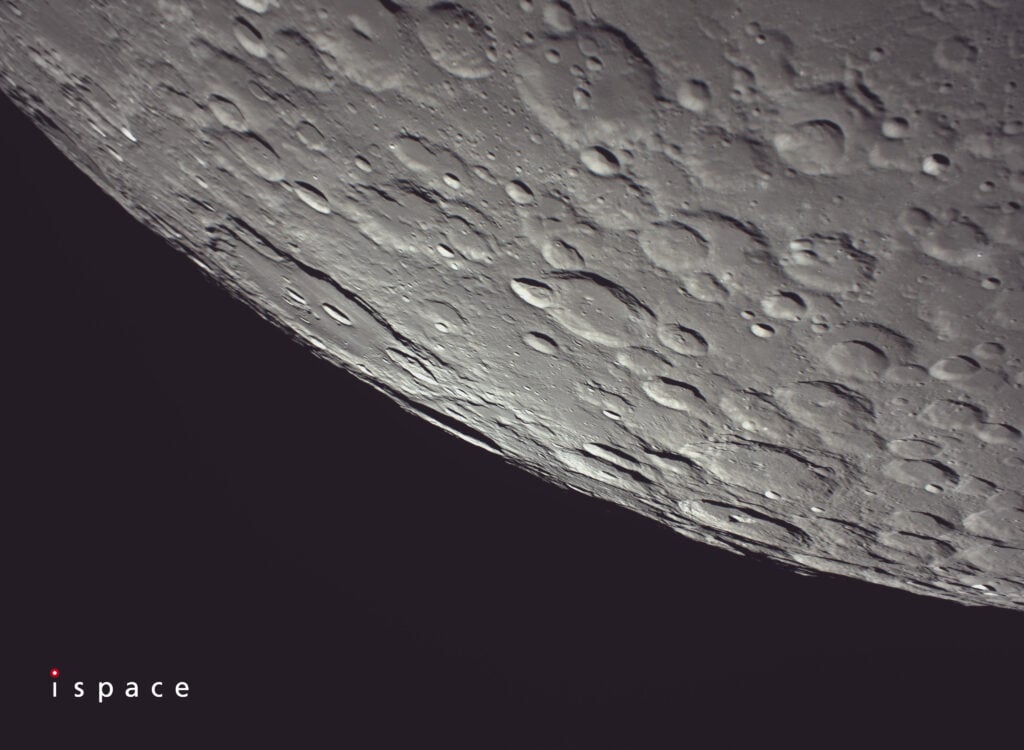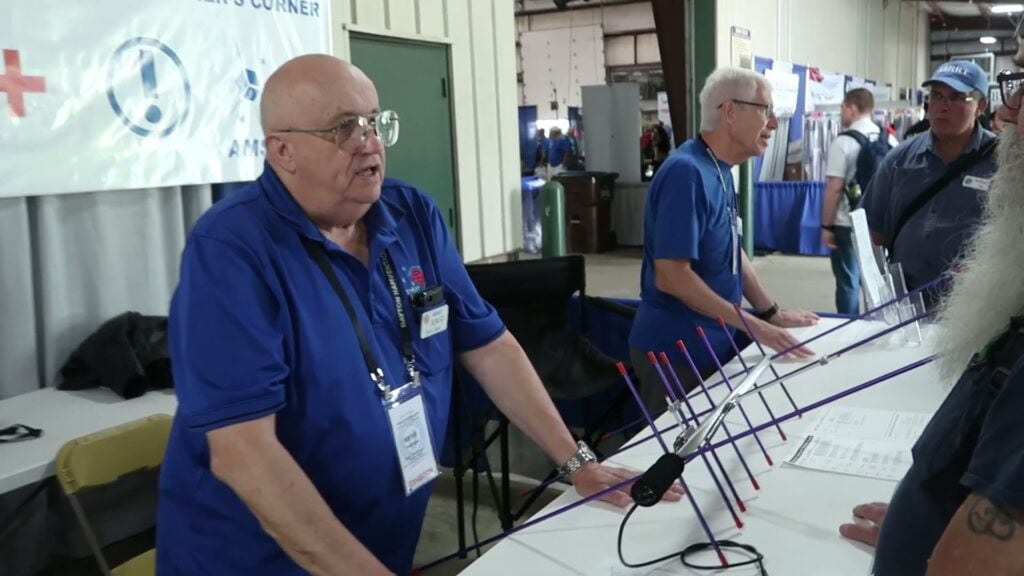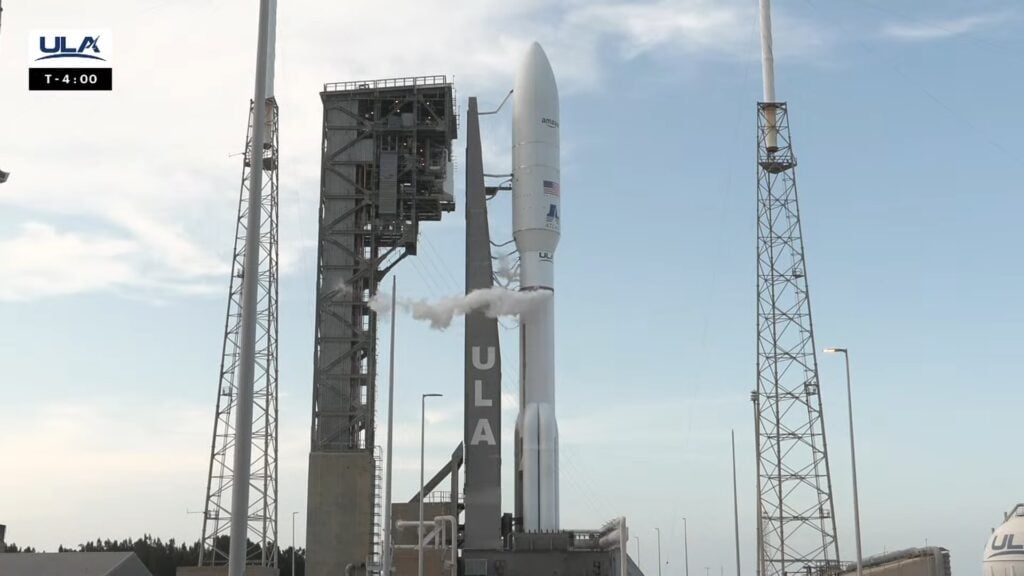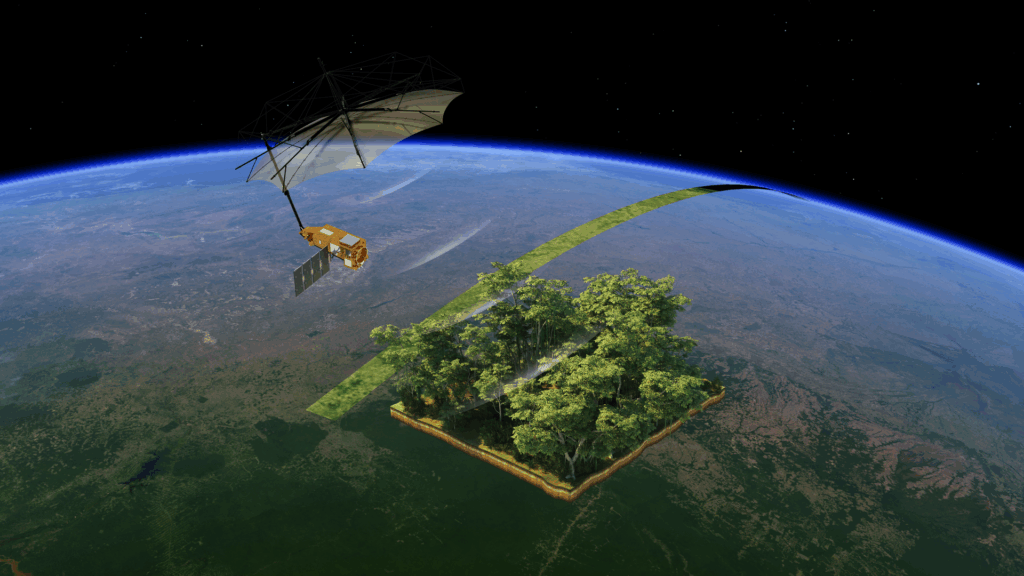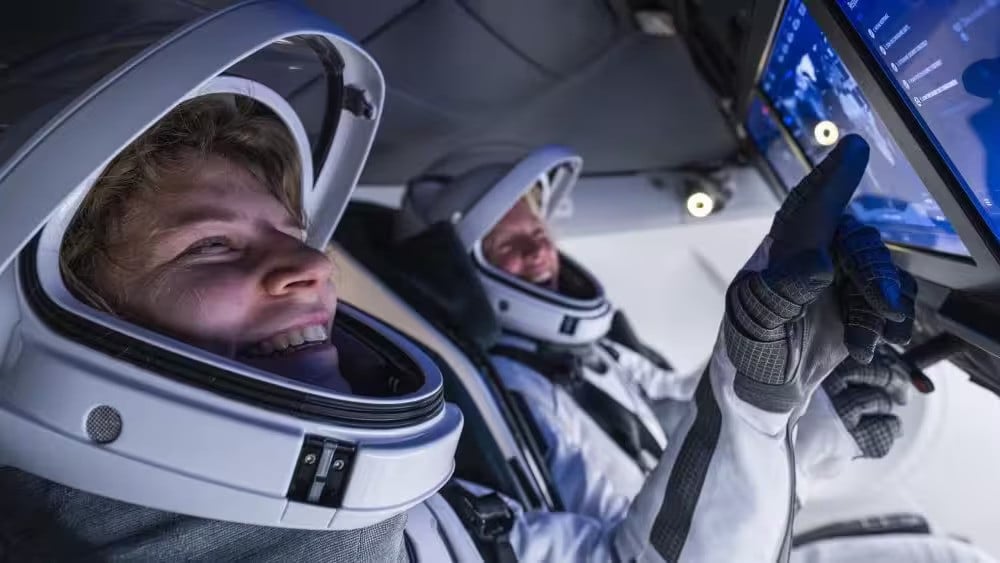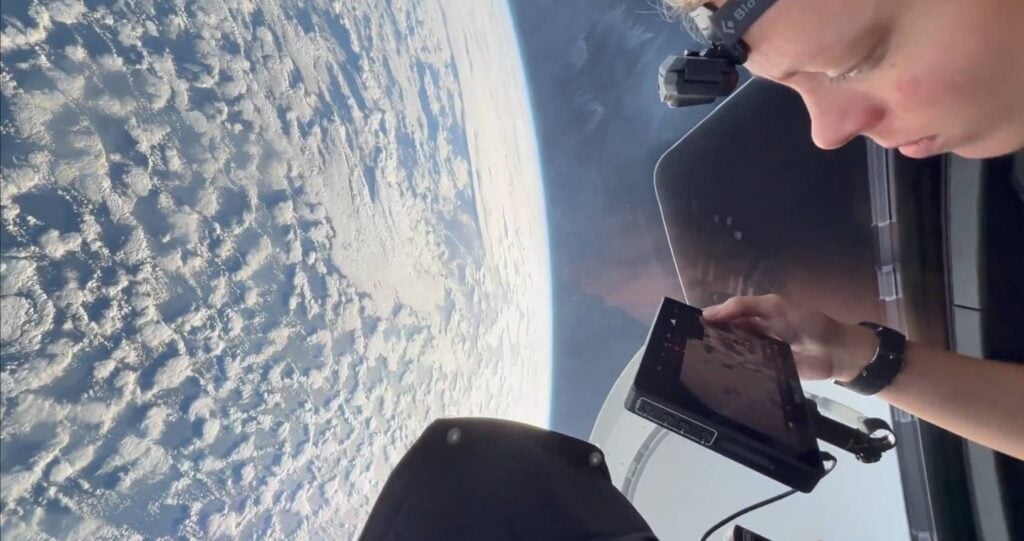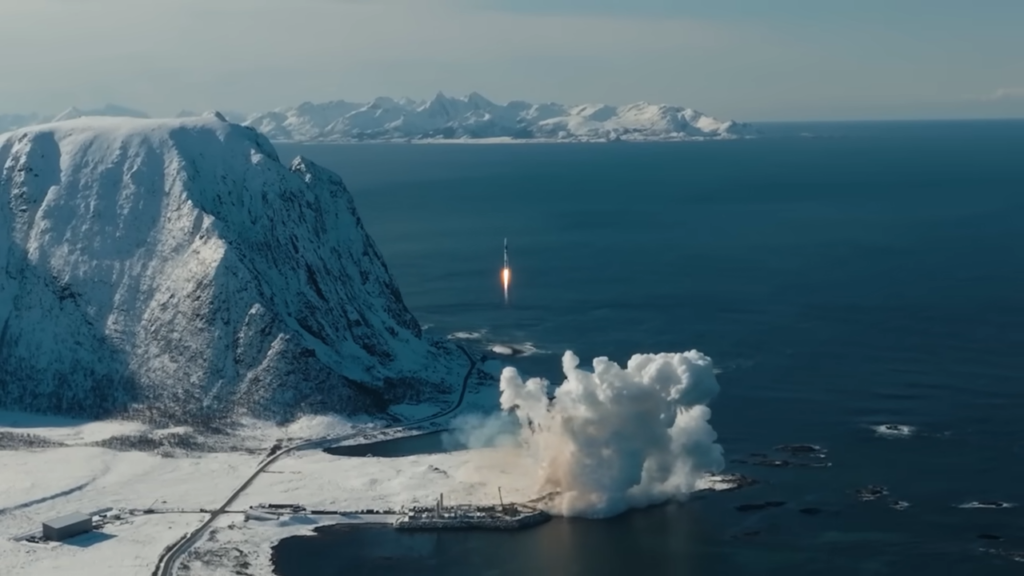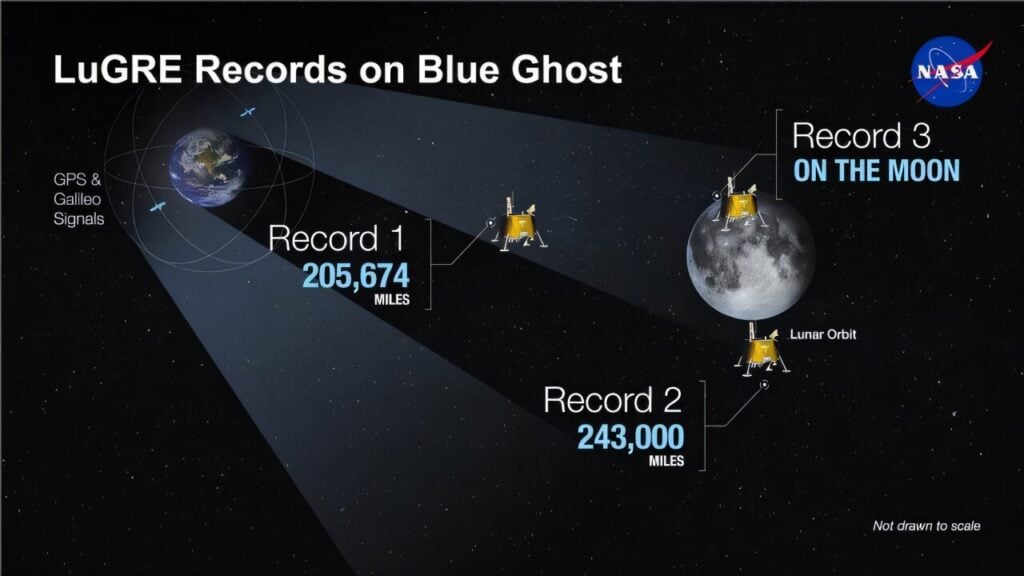In this edition:
* AMSAT Shares Update on Fox-Plus CubeSat Design, Adapter Issues, and Integration Work
* AMSAT South Africa to Host 2025 Virtual Symposium on 68 Years of Amateur Radio Progress
* AMSAT Seeks Additional Volunteers for Moon Day at Dallas Frontiers of Flight Museum
* SpaceX Transporter-14 Rideshare Delivers Small Sats, Reentry Tech, and Memorial Ashes
* Axiom-4 Reaches Orbit After Delays With Multinational Crew Bound for Space Station
* Changes to AMSAT-NA TLE Distribution for June 27, 2025
* ARISS News
* AMSAT Ambassador Activities
* Satellite Shorts From All Over
The AMSAT News Service bulletins are a free, weekly news and information service of AMSAT, the Radio Amateur Satellite Corporation. ANS publishes news related to Amateur Radio in Space including reports on the activities of a worldwide group of Amateur Radio operators who share an active interest in designing, building, launching and communicating through analog and digital Amateur Radio satellites.
The news feed on https://www.amsat.org publishes news of Amateur Radio in Space as soon as our volunteers can post it.
Please send any amateur satellite news or reports to: ans-editor [at] amsat.org
You can sign up for free e-mail delivery of the AMSAT News Service Bulletins via the ANS List; to join this list see: https://mailman.amsat.org/postorius/lists/ans.amsat.org/
ANS-180 AMSAT News Service Weekly Bulletins
To: All RADIO AMATEURS
From: Radio Amateur Satellite Corporation
712 H Street NE, Suite 1653
Washington, DC 20002
DATE 2025 Jun 29
AMSAT Shares Update on Fox-Plus CubeSat Design, Adapter Issues, and Integration Work
During Hamvention 2025, AMSAT’s Mike Moore presented the latest developments in the Fox-Plus program. Mike Moore, K4MVM, AMSAT Systems Engineer/Project Lead began his status review by saying, “I’ve been involved with the AMSAT Fox CubeSat program for the last year and a half. It’s a continuation of the Fox series of satellites. We’re improving on the series with the Fox-Plus CubeSat, modernizing it and, where we can do so, reducing costs.”
AMSAT’s Fox Plus project is proceeding towards being ready for a launch of a 1U CubeSat (Fox-Plus-A) with a V/u linear transponder. The term “1U” refers to the standard size CubeSat, also known as a nanosat, measuring 10x10x10 centimeters, weighing up to 2 kilograms.
The Fox-Plus Amateur Radio CubeSat series will add to the success of the original Fox series of AMSAT 1U CubeSats. The big push is to have Fox-Plus units ready to fly experimental payloads on short notice.
AMSAT is purchasing components from ISIS (Innovative Solutions In Space), formed in 2006, with offices in The Netherlands. They provide components, particularly for CubeSats and small satellites. The company offers “building blocks” such as spacecraft structures, solar panels, antennas, transceivers, attitude control systems, and on-board computers as well as satellite launcher units and services.
Mike continued, “To expedite development of Fox-Plus, AMSAT has selected Commercial Off The Shelf (COTS) components. This includes the ISIS CubeSat spacecraft frame, electrical power system, solar panels. We’re integrating those components with our AMSAT Linear Transponder Module (LTM).
“AMSAT’s LTM is a composed of the Legacy Internal Housekeeping Unit (LIHU), the Improved Command Receiver (ICR), receiver/transmitter (RXTX). The AMSAT Fox-Plus LTM module is shown within the dotted line rectangle, upper right in the system overview,” He said.
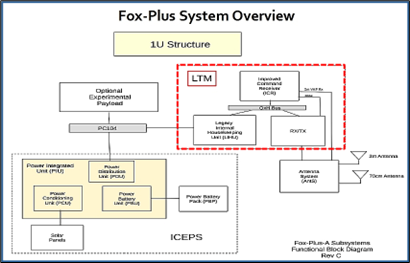
Moore explained, “We’ve been tasked to fit the COTS modules from ISIS, spacecraft frame, Electrical Power System (EPS) and solar panels with our AMSAT boards into the ISIS frame. That’s mechanical challenge. The ISIS frame and PCBs are not the same dimensions as AMSAT’s standard ME-113 PCB. The AMSAT ME-113 is used in legacy units as well as GOLF and other LTM applications.” The AMSAT-Fox Documentation, referenced below, provides details on Fox components.
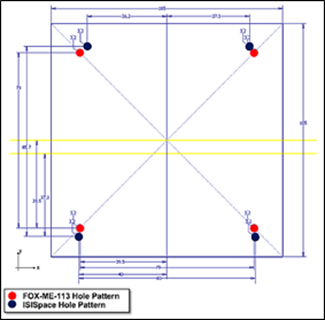
“The diagram above shows the ISIS hole pattern and board dimensions compared to the ME-113 holes and dimensions. The Fox ME-113 board dimensions are offset just enough to make it a real problem. If they were offset by a bit more the problem might be simpler. It’s possible we could just offset our PCB connectors. That’s not possible, making this a mechanical engineering design challenge.

“We have adapters to do this; one design is in the photo above. Our Mechanical & Structural Engineer is Andrew Robinson, KA3WDW.
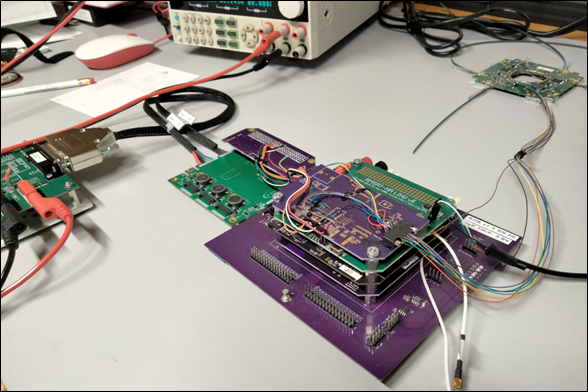
Mike continued, “The electrical adapter, is above on the right. The photo shows the PCBs while on my work bench. They’re half cards. It’s the ME-113 cut in half. I have the PC104 or in ISIS terms, the CubeSat Kit Bus (CSKB) on the left.
“That’s on the board on the left-hand side of the photo. The Power Integrated Unit (PIU) board from ISIS is connected to it. The photo shows just wires right now, but later there will be a ribbon cable over to our stacking bus which is our QXH electrical bus, a very small 60-pin connector. It connects all cards together.
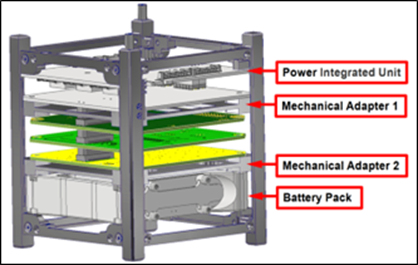
The diagram above shows the Fox-Plus CubeSat and the mechanical adapters. The LTM is in the middle. On the bottom is the Power Battery Pack (PBP) and the top board is the CubeSat Power Integrated Unit (PIU). It consists of three subsystems which derive electrical energy from the solar panels and the energy stored in the PBP.
“We’re also considering using spacers instead of using the entire card area dimensions for mechanical adapters. Spacers are small units with two side by side holes. One hole would go to the ISIS board, the other would to the ME-113 board.
“I’ve now got preliminary schematics of the adapter card done. We’re about ready to go to production on that to get PCBs made. That has the power and signal components on it, all the power for the satellite and two I2C buses, (Inter-Integrated Circuit, a two-wire, serial communication protocol that allows multiple devices to communicate with each other on a single bus).
“There’s a problem on the ICR card version 1.2 and we’re taking care of that. Also, there’s Universal Asynchronous Receive/Transmit (UART) interconnect problem as well as some other odds and ends on which we’re working,” Moore added.
There are innumerable details encountered during CubeSat research, development, test, and evaluation (RDTE).
Jerry Buxton, N0JY, Vice President of Engineering for AMSAT is a key member of the Fox Engineering Team dating back to the beginning of the program in 2011. In his “AMSAT Fox-1 Systems Engineering Documentation” June, 2018 paper, The Fox program introduced this engineering process for AMSAT. See references at end of document.
“Engineering documentation is provided at each stage of development. An archive of this documentation is online, backed-up and version controlled. When an AMSAT satellite has been completed this archive of traceable documentation serves as the basis for planning and executing future satellite programs. It is updated to apply the lessons learned about what went well and what did not.”
Documentation is part of organizational memory (OM), also known as institutional memory or corporate memory. OM is the accumulated body of data, information, and knowledge created in the course of an organization’s existence, excellent proof of internal learning and education and potentially a reference tool for use by external organizations.
Concluding his portion of the AMSAT Forum Mike said, “Burns Fisher is AMSAT’s software guru. Burns is working with Patrick Thomas, KB8DGC, AMSAT System Engineer and PACSAT Liaison, getting Patrick up to speed to do Fox-Plus flight software.”
Other dedicated volunteers on the Fox-Plus Engineering Team include Andrew Robinson, KA3WDW, Mechanical & Structural Engineer, and Leandra MacLennan, AF1R, Electrical Engineer, Hardware Development. Contributions from various universities and other organizations were essential too.
[ANS thanks Mike Moore, K4MVM, AMSAT Systems Engineer/Project Lead for the above information]
AMSAT South Africa to Host 2025 Virtual Symposium on 68 Years of Amateur Radio Progress
AMSAT South Africa has announced that the 2025 Space Symposium will take place on Saturday, 2 August 2025, from 08:00 UTC to 14:00 UTC, and has issued a call for papers. The theme of this year’s event is “Embracing 68 Years of Space Science and Innovation in Amateur Radio.”
Papers are invited on all aspects of space science and communication that impact or enhance the amateur radio experience — from technical developments to operational practices. Presentations will be approximately 30 minutes, followed by a 10-minute Q&A session. Proposal submissions in Microsoft Word format should be emailed to admin [at] amsatsa [dot] org [dot] za by 7 July 2025.
To maximize global participation, the symposium will be held online via the Webex platform. Attendance is free for members of all AMSAT organisations and national societies, with registration opening on 9 July 2025.
[ANS thanks AMSAT South Africa, for the above information]
AMSAT Seeks Additional Volunteers for Moon Day at Dallas Frontiers of Flight Museum
The 2025 Moon Day, a space-themed public STEM event, will take place on Saturday, July 19 at the Frontiers of Flight Museum at Love Field in Dallas. Held each year close to the date of the Apollo 11 moon landing, the event features hands-on science exhibits and activities for all ages. Moon Day runs from 10:00 a.m. to 4:00 p.m. CDT, with setup beginning at 8:00 a.m. CDT.
AMSAT will once again be represented at the event by AMSAT Ambassador Thomas Schuessler, N5HYP, along with several North Texas satellite enthusiasts. They will engage with the public — including many young people — on topics such as satellite orbits, the International Space Station, and amateur radio in space. Exhibits will include the AMSAT Fox CubeSat engineering model and the CubeSat Simulator, and the team hopes to demonstrate a few live satellite passes during the day.
Tom is seeking additional AMSAT volunteers from the North Texas area to help staff the exhibit table. The AMSAT booth will be located next to the Dallas Amateur Radio Club exhibit, providing opportunities for great conversations with fellow hams as well as curious families. Volunteers receive free museum admission and lunch. Anyone interested in helping for part or the entire day is encouraged to email Tom at n5hyp [at] arrl [dot] net.
More information about the event is available at: https://flightmuseum.com/events/moonday
[ANS thanks Tom Schuessler, N5HYP, AMSAT Ambassador, for the above information]
The 2025 AMSAT President’s Club Coins Have Just Arrived!
Celebrating the 40th Anniversary of Amateur Radio on Human Spaceflight
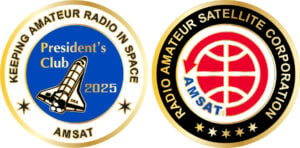
Help Support GOLF and Fox Plus.
Join the AMSAT President’s Club today!
SpaceX Transporter-14 Rideshare Delivers Small Sats, Reentry Tech, and Memorial Ashes
A SpaceX Falcon 9 rocket lifted off from Vandenberg Space Force Base in California on June 23 at 5:25 p.m. EDT (2125 UTC), carrying 70 payloads for a diverse range of customers. The mission, known as Transporter 14, is the latest in SpaceX’s dedicated rideshare program, which provides cost-effective launch services for small satellites and experimental spacecraft.
Among the payloads was a special memorial capsule containing cremated human remains and DNA samples. The Exploration Company’s new Nyx reusable spacecraft is flying this commemorative mission in cooperation with Celestis, a company specializing in space burials. If all goes according to plan, Nyx will circle Earth two or three times before being recovered, carrying remains and DNA from about 150 people.
The launch also delivered an array of microsats, cubesats, and reentry capsules. One notable payload is Varda Space’s fourth reentry capsule, which aims to support the company’s effort to manufacture pharmaceuticals and other high-value goods in microgravity and return them to Earth for commercial use. Transporter 14 continues SpaceX’s trend of supporting in-space manufacturing demonstrations and technology development.
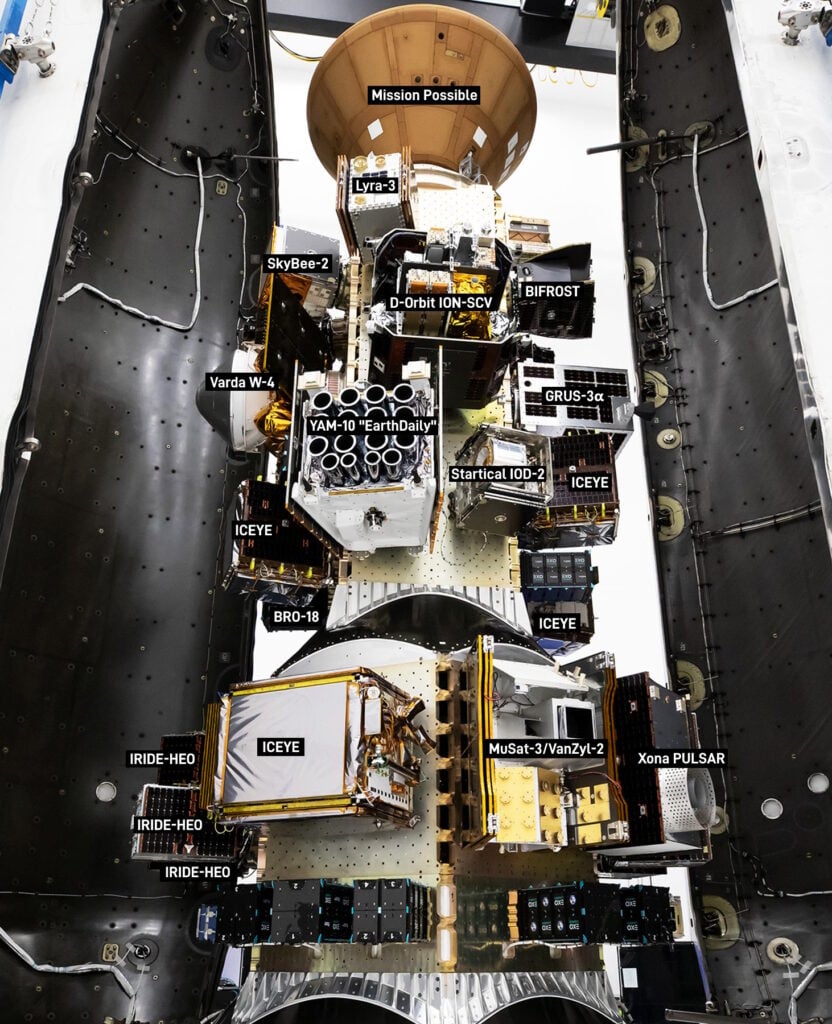
Indonesia’s RIDU-Sat 1 also joined the manifest. This 1U CubeSat, managed by the Republic of Indonesia Defense University, uses amateur radio frequencies for educational training and communications. It features a VHF APRS payload on 145.825 MHz and a telemetry beacon on 145.925 MHz, designed to support student learning and community engagement in satellite operations.
As with many previous Falcon 9 flights, reusability was on display. The rocket’s first stage landed successfully on the drone ship Of Course I Still Love You in the Pacific Ocean about 8.5 minutes after liftoff. It marked the 26th flight and landing for this booster, edging closer to SpaceX’s reuse record of 28 flights. Meanwhile, the upper stage will spend nearly two hours deploying the payloads into precise orbits, continuing a mission series that began with Transporter 1’s record-setting 143-satellite launch in 2021.
Read the full article at: https://www.space.com/space-exploration/launches-spacecraft/spacex-launches-human-remains-reentry-capsule-and-more-on-transporter-14-rideshare-mission
[ANS thanks Mike Wall, Space.com, and the IARU, for the above information]
Axiom-4 Reaches Orbit After Delays with Multinational Crew Bound for Space Station
SpaceX successfully launched Axiom Space’s fourth private astronaut mission to the International Space Station (ISS) early June 25, following a series of technical and scheduling delays. The mission, known as Ax-4, lifted off aboard a Falcon 9 rocket from Launch Complex 39A at NASA’s Kennedy Space Center in Florida at 2:31 a.m. Eastern (0631 UTC). Nearly 10 minutes later, the Crew Dragon capsule separated from the rocket’s second stage in low Earth orbit.
The rocket’s reusable first stage completed a precise landing at Cape Canaveral’s Landing Zone 1. After a particularly long orbital chase — 28 hours between launch and rendezvous — the crew’s Dragon spacecraft docked with the space station Thursday morning at 6:31 a.m. Eastern (1031 UTC), where it will remain for approximately two weeks. The mission adds to SpaceX’s growing resume of crewed flights to the orbital outpost, further expanding the role of commercial providers in human spaceflight.
Commanding Ax-4 is Peggy Whitson, a veteran NASA astronaut making her fifth journey to space. She previously flew on three long-duration NASA missions and commanded Axiom’s Ax-2 mission in 2023. The rest of the crew includes Shubhanshu Shukla of India as pilot, and mission specialists Sławosz Uznański-Wiśniewski of Poland and Tibor Kapu of Hungary. All three are only the second individuals from their respective countries to reach orbit. Uznański-Wiśniewski’s flight is supported by the European Space Agency.
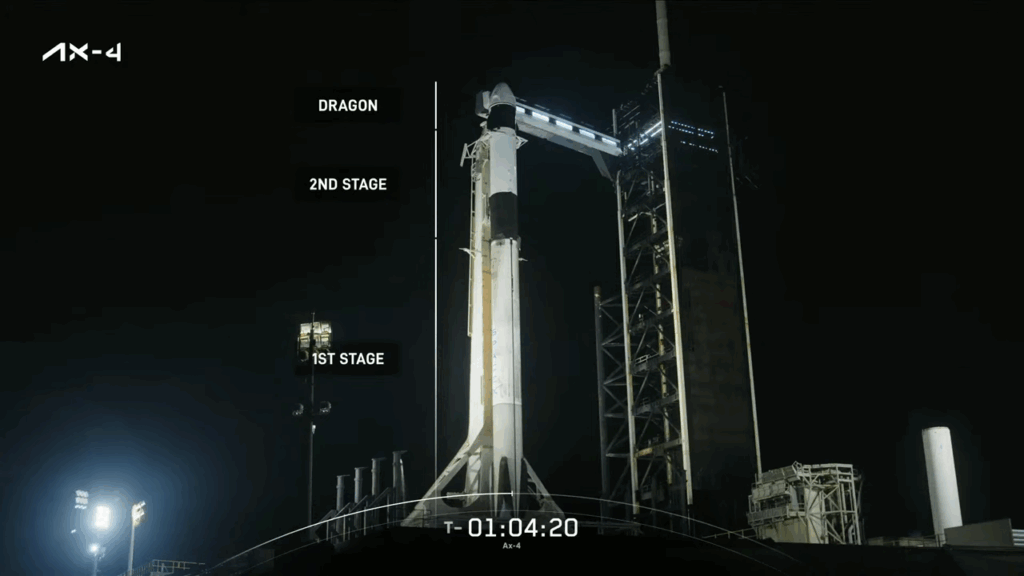
With clearance granted on June 23, the mission moved forward. The Ax-4 crew will conduct about 60 scientific experiments during their stay—the most of any Axiom mission to date. This includes joint research efforts between NASA and the Indian Space Research Organisation (ISRO), with Shukla collaborating alongside NASA astronauts aboard the station.
Ax-4 also marks the first flight of the fifth and final Crew Dragon spacecraft built by SpaceX. In line with tradition, the crew named the new spacecraft upon reaching orbit. Commander Whitson revealed its name—Grace—as it separated from the rocket. “Grace is more than a name,” she said. “It reflects the elegance with which we move through space against the backdrop of Earth… an act of goodwill for the benefit of every human everywhere.”
Read the full article at: https://spacenews.com/fourth-axiom-space-private-astronaut-mission-launched-to-iss
[ANS thanks Jeff Foust, SpaceNews.com, for the above information]
Changes to AMSAT-NA TLE Distribution for June 27, 2025
Two Line Elements or TLEs, often referred to as Keplerian elements or keps in the amateur community, are the inputs to the SGP4 standard mathematical model of spacecraft orbits used by most amateur tracking programs. Weekly updates are completely adequate for most amateur satellites. TLE bulletin files are updated daily in the first hour of the UTC day. New bulletin files will be posted immediately after reliable elements become available for new amateur satellites. More information may be found at https://www.amsat.org/keplerian-elements-resources/.
NOTICE: In an effort to minimize confusion between sources of two line element sets, AMSAT is adopting the convention of listing the USSF/NORAD Satellite Catalog name first, followed by any secondary name or names in parentheses. For example, “POEM 4 (BGS ARPIT)” was added recently where “POEM 4” is the name that appears in the US Space Force Satellite Catalog, and “BGS ARPIT” is the name best known within the amateur satellite community. Expect name changes for affected satellites in the coming weeks as this change is fully implemented.
This week there are no additions or deletions to the AMSAT TLE distribution.
[ANS thanks AMSAT Orbital Elements page for the above information]
ARISS NEWS
Amateurs and others around the world may listen in on contacts between amateurs operating in schools and allowing students to interact with astronauts and cosmonauts aboard the International Space Station. The downlink frequency on which to listen is 145.800 MHz worldwide.
There are no upcoming ARISS contacts to report while schools are on summer recess. Scheduling is expected to resume as educational institutions return to session.
Many times a school may make a last minute decision to do a Livestream or run into a last minute glitch requiring a change of the URL but we at ARISS may not get the URL in time for publication. You can always check https://live.ariss.org/ to see if a school is Livestreaming.
The crossband repeater continues to be active (145.990 MHz up {PL 67} & 437.800 MHz down). If any crewmember is so inclined, all they have to do is pick up the microphone, raise the volume up, and talk on the crossband repeater. So give a listen, you just never know.
The packet system is also active (145.825 MHz up & down).
As always, if there is an EVA, a docking, or an undocking; the ARISS radios are turned off as part of the safety protocol.
Note, all times are approximate. It is recommended that you do your own orbital prediction or start listening about 10 minutes before the listed time.
The latest information on the operation mode can be found at https://www.ariss.org/current-status-of-iss-stations.html
The latest list of frequencies in use can be found at https://www.ariss.org/contact-the-iss.html
[ANS thanks Charlie Sufana, AJ9N, one of the ARISS operation team mentors for the above information]
AMSAT Ambassador Activities
AMSAT Ambassadors provide presentations, demonstrate communicating through amateur satellites, and host information tables at club meetings, hamfests, conventions, maker faires, and other events.
AMSAT Ambassador Clint Bradford, K6LCS, says,
“Think a 75-minute presentation on “working the easy satellites” would be appropriate for your club or event? Let me know by emailing me at k6lcsclint (at) gmail (dot) com or calling me at 909-999-SATS (7287)!”
Clint has NEVER given the exact same show twice: EACH of the 150+ presentations so far has been customized/tailored to their audiences.
Scheduled Events
Olmos Preschool Mid-Year Space Camp – July 3rd, 2025
TI3IES Ignacio, AMSAT and AMSAT-TI Ambassador, will be giving a presentation and demonstration of amateur satellite communications at Olmos Preschool in Curridabat, San José, Costa Rica, on Thursday, July 3rd. The event is part of the school’s mid-year camp, which runs for two weeks with a space-themed focus. The presentation is specially designed for preschool-aged children, who have been learning about planets, stars, and spacecraft. This engaging session will introduce them to satellite communications in a fun and age-appropriate way. Ignacio will be representing AMSAT and AMSAT-TI as part of their ongoing outreach to inspire young learners through space and amateur radio.
Rochester Amateur Radio Association Hamfest 2025 – June 21st, 2025
Barnard Fire Department Park
410 Maiden Lane
Rochester, NY 14616
https://rochesterham.org/hamfest.htm
KB2YSI
Northeast HamXposition (HamX) & New England ARRL Convention – August 21st thru 24th, 2025
Best Western Royal Plaza & Trade Center
181 Boston Post Road West
Marlborough, MA 01752
http://www.HamX.org
W1EME, WD4ASW, WB1FJ
Greater Louisville Hamfest – September 6th, 2025
Paroquet Springs Conference Centre
395 Paroquet Springs Drive
Shepherdsville, KY 40165
https://louisvillehamfest.wixsite.com/louisvillehamfest
W4FCL
43rd Annual AMSAT Space Symposium & Annual General Meeting – October 16th thru 19th, 2025
Holiday Inn & Suites Phoenix Airport North
1515 North 44th Street
Phoenix, Arizona 85008
https://www.amsat.org/2025-symposium/
Interested in becoming an AMSAT Ambassador? AMSAT Ambassadors provide presentations, demonstrate communicating through amateur satellites, and host information tables at club meetings, hamfests, conventions, maker faires, and other events.
For more information go to: https://www.amsat.org/ambassador/
[ANS thanks Bo Lowrey, W4FCL, Director – AMSAT Ambassador Program, for the above information]
AMSAT Remove Before Flight Key Tags Now Available
Yes, These are the Real Thing!
Your $20 Donation Goes to Help Fly a Fox-Plus Satellite
Includes First Class Postage (Sorry – U.S. Addresses Only)
Order Today at https://www.amsat.org/product/amsat-remove-before-flight-keychain
Satellite Shorts From All Over
+ On June 23, 2025, United Launch Alliance (ULA) successfully launched its Atlas V rocket carrying Amazon’s second batch of 27 Project Kuiper satellites into low Earth orbit from Cape Canaveral. This mission, dubbed Kuiper 2, was the second production batch toward Amazon’s plan for a 3,200+ satellite constellation providing global internet service. The launch followed a previous scrub due to a nitrogen purge issue and lifted off at 6:54 a.m. EDT (1054 UTC) after a smooth countdown and favorable weather. Amazon faces an FCC deadline to have half its first-generation constellation operational by July 2026 and has secured launches with multiple providers including ULA, SpaceX, Blue Origin, and Arianespace. With six more Atlas V launches booked and many Vulcan, Ariane 6, New Glenn, and Falcon 9 flights planned, Amazon aims to accelerate deployment to meet regulatory requirements. This second successful launch brings the total number of Kuiper satellites on orbit to 54, underscoring Amazon’s push to establish a steady launch cadence. (ANS thanks Spaceflight Now for the above information)
+ A new study has revealed that the May 2024 Gannon Solar Storm caused GPS signals to be off by up to 230 feet (70 meters), severely impacting farmers who lost over $500 million USD due to malfunctioning GPS-guided machinery during peak planting season. The storm, the most powerful in 20 years, created widespread ionospheric turbulence that distorted GPS signals for up to two days and produced stunning auroras visible as far south as Mexico and Spain. Boston University researchers used a network of fixed GPS receivers originally intended for tectonic studies to measure the disturbances, uncovering a massive “wall of ionospheric plasma” that threw off positioning data across North America. This GPS disruption affected not only agriculture but also aviation, exceeding the safety margin for altitude precision during landings. Experts warn that this storm was mild compared to a potential Carrington-level event, which could cause even more severe global consequences. Scientists suggest that real-time ionospheric monitoring and AI-based signal correction could help mitigate such risks in future storms. (ANS thanks Space.com for the above information)
+ NASA’s ESCAPADE mission, originally set to launch on the first flight of Blue Origin’s New Glenn, is now tentatively scheduled for the rocket’s second flight sometime between summer 2025 and spring 2026. The change was prompted by delays in New Glenn’s development, which caused ESCAPADE to miss its original October 2024 launch window. NASA’s FY 2026 budget proposal confirmed the revised plan, citing a new launch readiness date in the fourth quarter of fiscal year 2025. ESCAPADE, a pair of Mars-bound smallsats, remains committed to New Glenn, despite no recent updates from Blue Origin on the rocket’s second launch timeline. NASA continues to work with Blue Origin to finalize a date, while still targeting arrival at Mars by September 2027 using a revised flight path. Though Blue Origin previously suggested a spring launch and hinted at possible alternate payloads, no firm details have been released as of yet. (ANS thanks SpaceNews for the above information)
+ Mexico’s president has threatened legal action over debris from a recent SpaceX rocket explosion near the U.S.-Mexico border. President Sheinbaum said the government is investigating potential violations of international law due to environmental contamination. The explosion occurred during a ground test of a SpaceX Starship at its Starbase facility in Texas, sending a large fireball into the sky. Mexican officials are now conducting a comprehensive environmental review focused on the nearby state of Tamaulipas. This comes after the U.S. FAA approved an increase in annual Starship launches from five to 25, despite warnings from conservation groups about threats to wildlife. Sheinbaum emphasized that any resulting lawsuit would be based on scientific findings and legal analysis. If filed, the lawsuit would follow another recent case in which Mexico sued Google over the labeling of the Gulf of Mexico. (ANS thanks Phys.org for the above information)
Join AMSAT today at https://launch.amsat.org/
In addition to regular membership, AMSAT offers membership to:
* Societies (a recognized group, clubs or organization).
* Primary and secondary school students are eligible for membership at one-half the standard yearly rate.
* Post-secondary school students enrolled in at least half-time status shall be eligible for the student rate for a maximum of 6 post-secondary years in this status.
* Memberships are available for annual and lifetime terms.
Contact info [at] amsat.org for additional membership information.
73 and remember to help Keep Amateur Radio in Space!
This week’s ANS Editor, Mitch Ahrenstorff, ADØHJ
mahrenstorff [at] amsat.org

